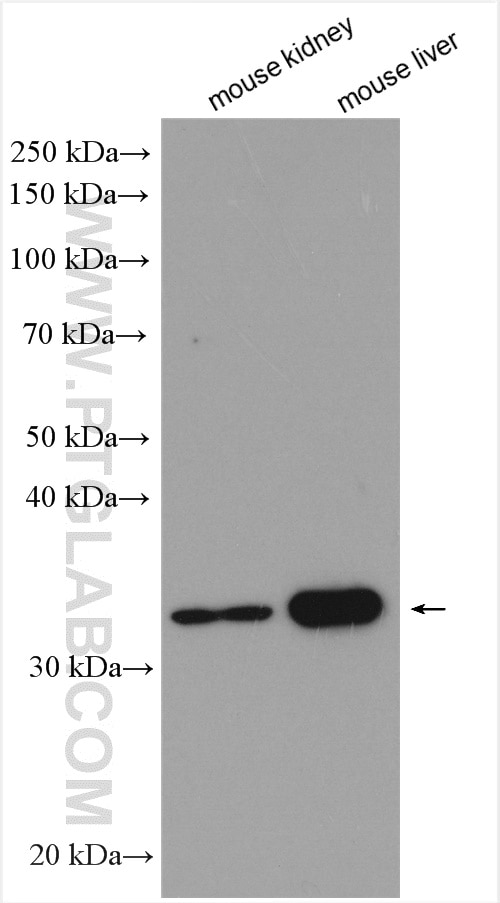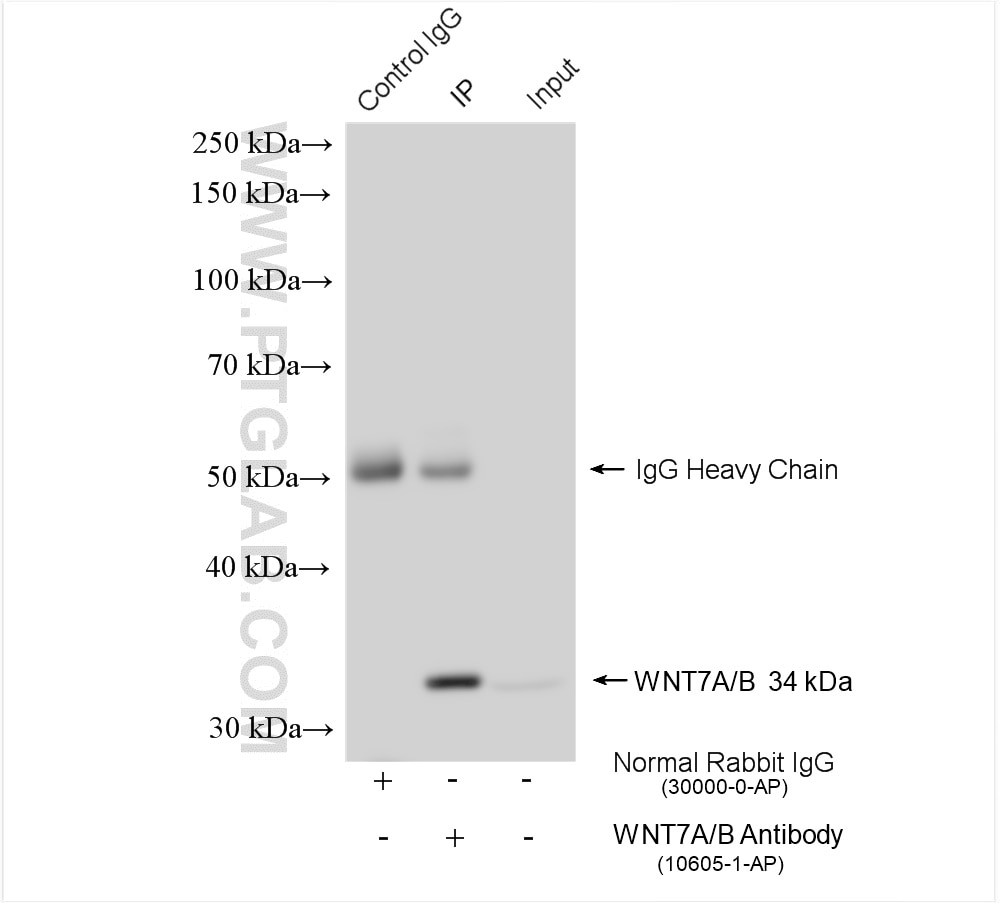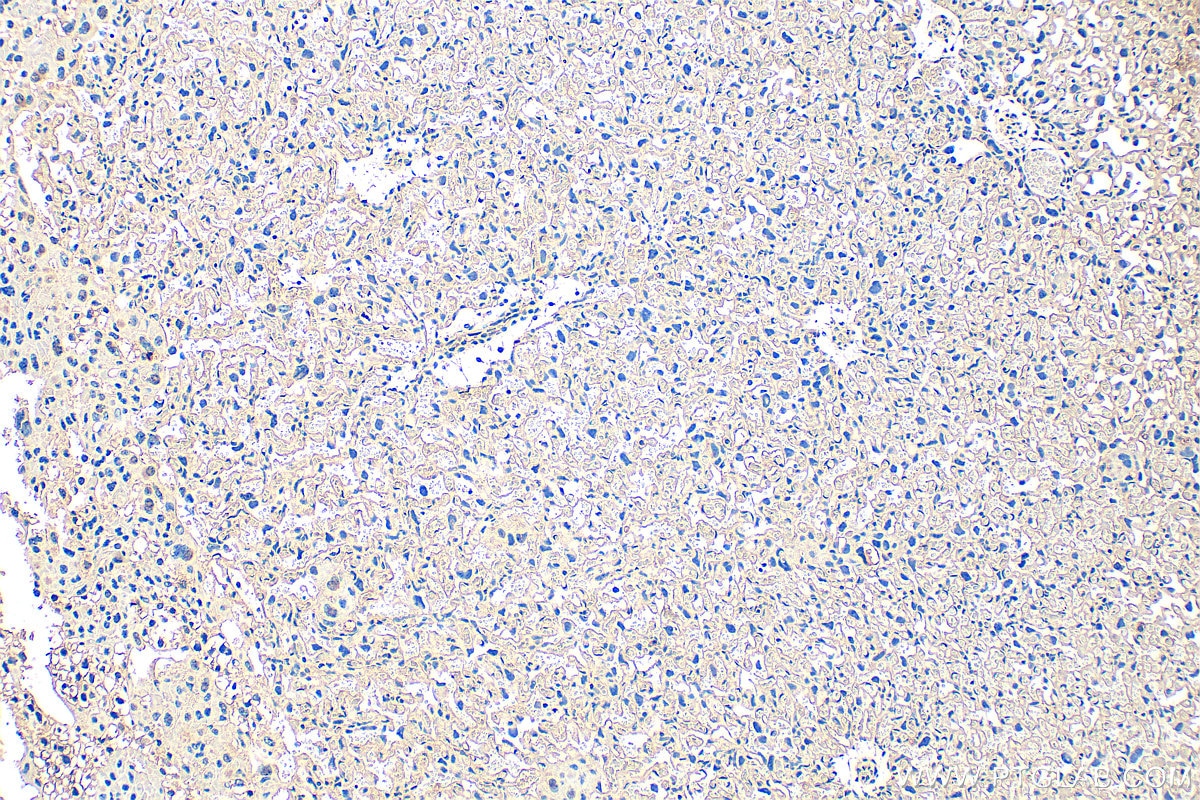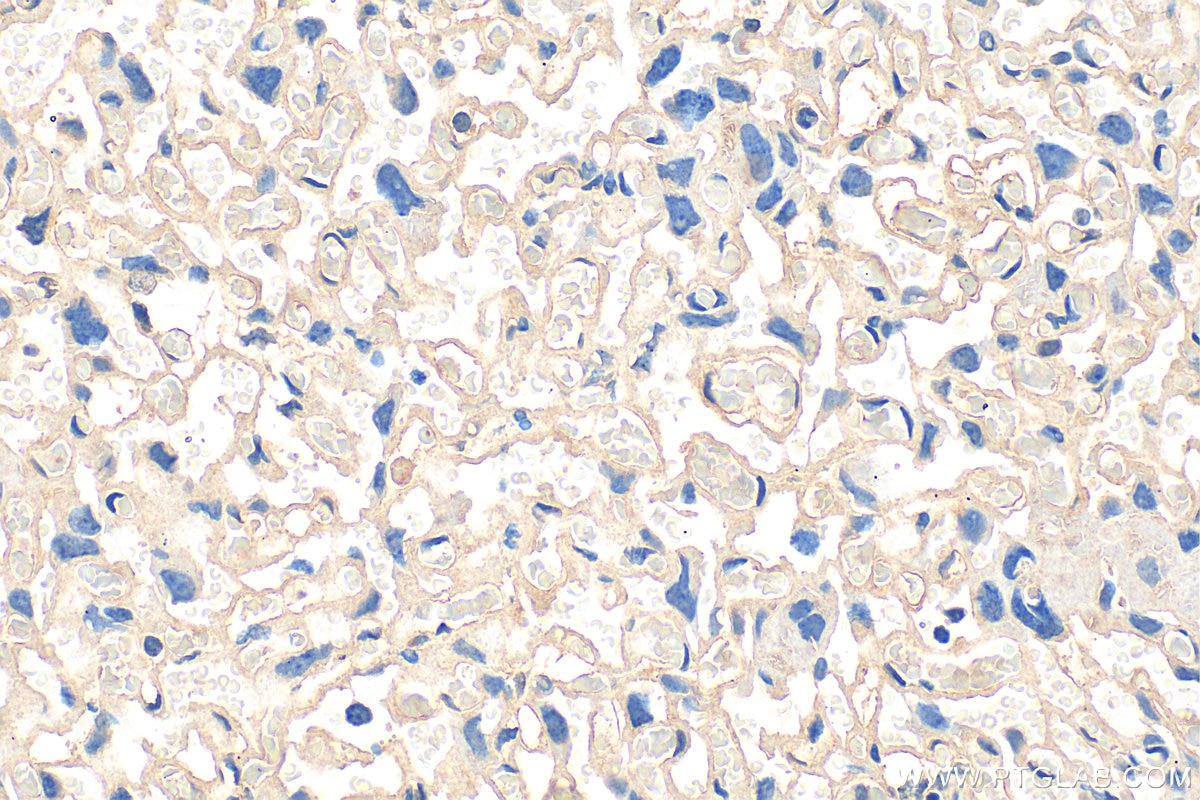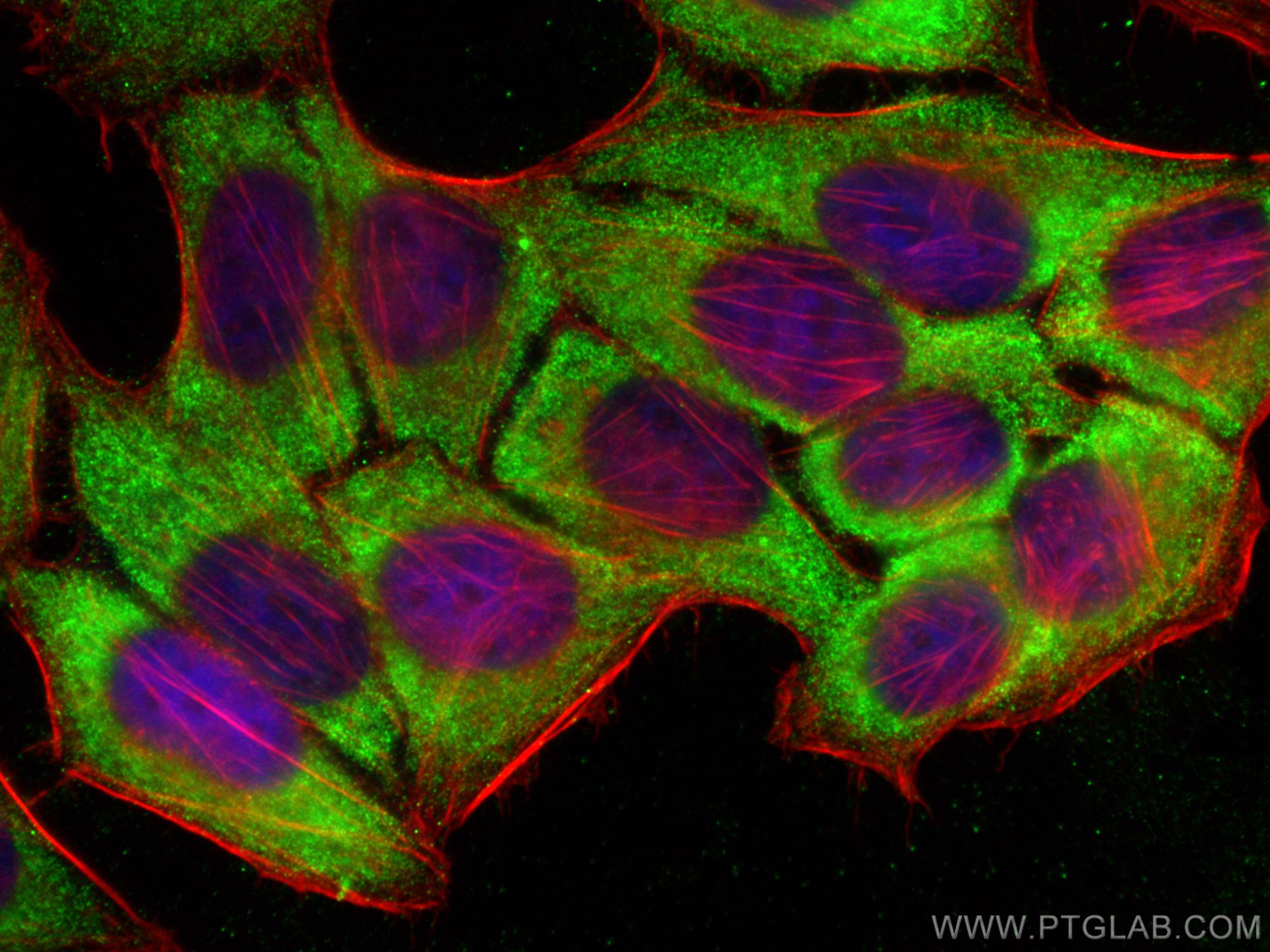Tested Applications
| Positive WB detected in | mouse kidney tissue, mouse liver tissue |
| Positive IP detected in | mouse kidney tissue |
| Positive IHC detected in | mouse placenta tissue Note: suggested antigen retrieval with TE buffer pH 9.0; (*) Alternatively, antigen retrieval may be performed with citrate buffer pH 6.0 |
| Positive IF/ICC detected in | HepG2 cells |
Recommended dilution
| Application | Dilution |
|---|---|
| Western Blot (WB) | WB : 1:500-1:2000 |
| Immunoprecipitation (IP) | IP : 0.5-4.0 ug for 1.0-3.0 mg of total protein lysate |
| Immunohistochemistry (IHC) | IHC : 1:50-1:500 |
| Immunofluorescence (IF)/ICC | IF/ICC : 1:50-1:500 |
| It is recommended that this reagent should be titrated in each testing system to obtain optimal results. | |
| Sample-dependent, Check data in validation data gallery. | |
Published Applications
| KD/KO | See 1 publications below |
| WB | See 9 publications below |
| IHC | See 5 publications below |
| IF | See 3 publications below |
Product Information
10605-1-AP targets WNT7A/B in WB, IHC, IF/ICC, IP, ELISA applications and shows reactivity with human, mouse samples.
| Tested Reactivity | human, mouse |
| Cited Reactivity | human, mouse, rat |
| Host / Isotype | Rabbit / IgG |
| Class | Polyclonal |
| Type | Antibody |
| Immunogen |
CatNo: Ag0874 Product name: Recombinant human WNT7A protein Source: e coli.-derived, PGEX-4T Tag: GST Domain: 1-349 aa of BC008811 Sequence: MNRKARRCLGHLFLSLGMVYLRIGGFSSVVALGASIICNKIPGLAPRQRAICQSRPDAIIVIGEGSQMGLDECQFQFRNGRWNCSALGERTVFGKELKVGSREAAFTYAIIAAGVAHAITAACTQGNLSDCGCDKEKQGQYHRDEGWKWGGCSADIRYGIGFAKVFVDAREIKQNARTLMNLHNNEAGRKILEENMKLECKCHGVSGSCTTKTCWTTLPQFRELGYVLKDKYNEAVHVEPVRASRNKRPTFLKIKKPLSYRKPMDTDLVYIEKSPNYCEEDPVTGSVGTQGRACNKTAPQASGCDLMCCGRGYNTHQYARVWQCNCKFHWCCYVKCNTCSERTEMYTCK Predict reactive species |
| Full Name | wingless-type MMTV integration site family, member 7A |
| Calculated Molecular Weight | 39 kDa |
| Observed Molecular Weight | 30-39 kDa |
| GenBank Accession Number | BC008811 |
| Gene Symbol | WNT7A |
| Gene ID (NCBI) | 7476 |
| RRID | AB_2215625 |
| Conjugate | Unconjugated |
| Form | Liquid |
| Purification Method | Antigen affinity purification |
| UNIPROT ID | O00755 |
| Storage Buffer | PBS with 0.02% sodium azide and 50% glycerol, pH 7.3. |
| Storage Conditions | Store at -20°C. Stable for one year after shipment. Aliquoting is unnecessary for -20oC storage. 20ul sizes contain 0.1% BSA. |
Background Information
The Wnt gene family encodes secreted signaling molecules that bind to frizzled receptors and influence oncogenesis and developmental processes, including regulation of cell fate and patterning during embryogenesis. Wnt7a is normally expressed in several organs, including the lung, testis, lymph node, and brain. As an oncogenic autocrine glycoprotein, Wnt7a promotes tumor invasion and distant metastasis with cancer-associated fibroblasts. Wnt7b is required for endothelial cells derived from pluripotent stem cells to acquire blood-brain barrier properties and may play an important role in the development of myopia in humans. This antibody can both recognize WNT7A and WNT7B.
Protocols
| Product Specific Protocols | |
|---|---|
| IF protocol for WNT7A/B antibody 10605-1-AP | Download protocol |
| IHC protocol for WNT7A/B antibody 10605-1-AP | Download protocol |
| IP protocol for WNT7A/B antibody 10605-1-AP | Download protocol |
| WB protocol for WNT7A/B antibody 10605-1-AP | Download protocol |
| Standard Protocols | |
|---|---|
| Click here to view our Standard Protocols |
Publications
| Species | Application | Title |
|---|---|---|
Front Oncol The Role of miR-640: A Potential Suppressor in Breast Cancer via Wnt7b/β-catenin Signaling Pathway. | ||
Development Aberrant centrosome biogenesis disrupts nephron and collecting duct progenitor growth and fate resulting in fibrocystic kidney disease | ||
Oncol Rep Wnt7a predicts poor prognosis, and contributes to growth and metastasis in tongue squamous cell carcinoma.
| ||
Behav Brain Res OGDHL ameliorates cognitive impairment and Alzheimer's disease-like pathology via activating Wnt/β-catenin signaling in Alzheimer's disease mice. | ||
Oncol Rep RNA-binding motif protein 5 negatively regulates the activity of Wnt/β-catenin signaling in cigarette smoke-induced alveolar epithelial injury. | ||
Neurol Res Wnt signaling pathway is involved in the pathogenesis of amyotrophic lateral sclerosis in adult transgenic mice. |

